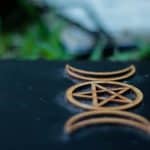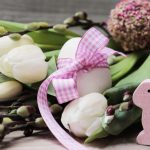Litha, or the Midsummer sabbat, is celebrated as a lesser sabbat in modern paganism and also one of the main fire festivals in the Celtic calendar. It is celebrated around June 21st, usually falling on any day from June 20th to June 23rd in the Northern hemisphere. In the southern hemisphere, it falls around December 21st to December 22nd. The changes in the dates result from the shifting earth’s rotation around the sun which our calendar does not precisely reflect.
Litha marks the longest day of the year, the end of spring, and the start of summer astronomically. It celebrates all attributes of the sun and its deities, including fertility, joy, abundance, etc. Litha is known by many other names depending on culture and language. Some popular names include;
- Alban Heruin
- Alban Hefin
- Sun Blessing, Gathering Day
- Whit Sunday, Whitsuntide
- Vestalia
- The Feast of Epona
- All-Couples Day
- St. Johns Day
- The Day of the Green Man
- The Day of Cerridwen and Her Cauldron
Litha Origins and History
Historical evidence shows that Litha celebrations date back thousands of years and as far as the Neolithic period. Many agricultural societies used the period to indicate a time for planting and harvesting. Many ancient monuments like Stonehenge and the Egyptian pyramids were built to align with the sun’s position during the Summer solstice.
Some ancient Greek calendars show that this period marked a new year’s start. Among the Romans, Litha was a time to celebrate the goddess of women, childbirth, and fertility. They also marked the feast of Vestalia, celebrating Vesta, the goddess of home and hearth. It was time to honor the goddess Aine, who rules over summer, fertility, and sovereignty among the Celts.
Early Europeans would further build on this practice by adopting a symbolic approach where they would set huge wheels on fire and roll them downhill into a body of water. In places where Christianity had strong influences, the day was merged with Christian practice and became part of St John the Baptist’s Day celebrations. The festivities start on June 20th and go on till the Christian festival day of June 24th.
Modern-day observance of the festivities primarily honors the power of the sun deities and the magic which is usually strong at the solstices. It is one of the most important dates in the pagan dates. The festivities include singing, dancing on a maypole, bonfires, etc.
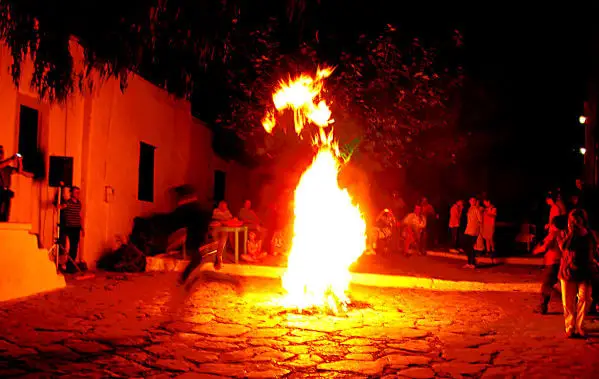
Litha Symbols
Some common and significant Litha symbols include;
Bonfires
Fire signifies the potent nature of the sun, and the bonfire represents the sun at peak strength. In the past, worshippers would light bonfires on Litha’s eve to watch and welcome the sunrise. The bonfires are lit at the top of the hill, holly wells, and sacred places in honor of the sun’s fullness. Oakwood would often be used to light the fire, and aromatic bushes were thrown in the fire for blessings. The ashes and coals from the fire would be scattered on farms to promote a good harvest.
Oak trees
The Oak trees represent the Oak King, who rules during the waxing part of the year and is most potent during this day. They symbolize his attributes of strength and endurance. In Celtic language, the name for Oak means a doorway symbolizing the threshold the year passes from the waxing part to the waning part of the year.
Mistletoe
Mistletoe is usually associated with Yule and the winter solstice, but it is most potent at midsummer. It is especially regarded highly if it grows on oak trees. The mistletoe represents vitality, romance, and fertility, all celebrated in Litha.
Herbs
Midsummer is when herbs of all kinds reach their peak and potency. They signify healing and nurturing as well as fertility. Herbs are used to prepare altars and as a gift during this period. Popular herbs you can harvest and use for this day include bay leaves, sunflower, St John’s Wort, ivy, chamomile, passionflower, saffron, etc.
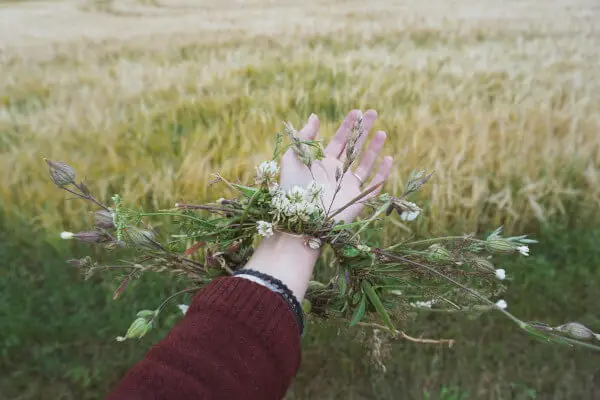
Flowers
Like herbs, flowers are also at their peak during Litha. They signify abundance, success, fertility, and their bright colors match the sun’s peak and celebrate its radiance.
Honey and bees
The full midsummer moon is also known as the Honey Moon because this is the time bees are making honey. Honey is celebrated as a divine solar drink possessing life healing and restoration properties.
Some also believe it has magical properties. Honey is also integral to making mead, which is used in celebrations. Bees are also out and about and are associated with the sun as they also use it for their navigation.
Related Reading: The 8 Major Annual Wiccan Holidays (Sabbats) – Opens in new tab
Litha Colors
Litha colors are radiant and celebrate both the sun’s brightness and the greenery present at this point of the year. The main colors are;
- Gold: Gold symbolizes energy, strength, power, success, the sun, solar deities, and prosperity,
- Green: Green is a color of abundance, and it also symbolizes prosperity, fertility, growth, and new beginnings. The color also has a calming presence.
- Orange: Like gold, orange represents energy. It symbolizes adaptability, creativity, optimism, success, courage, and communication.
- Red: Red has plenty of symbolism. It can stand for anger, courage, lust and sexual love, strength, creativity, energy, desire, willpower, and fire.
- White: White signifies divination, innocence, cleansing, healing, protection, peace, and the truth.
- Yellow: Yellow also represents communication, the sun, creativity, and protection. It is also the color for learning, intelligence, happiness, dreams, and willpower.
- Blue: Blue is the color of the sky and the ocean or water bodies in general. It is a calming color that symbolizes stability, reliability, good health, wisdom, and serenity.
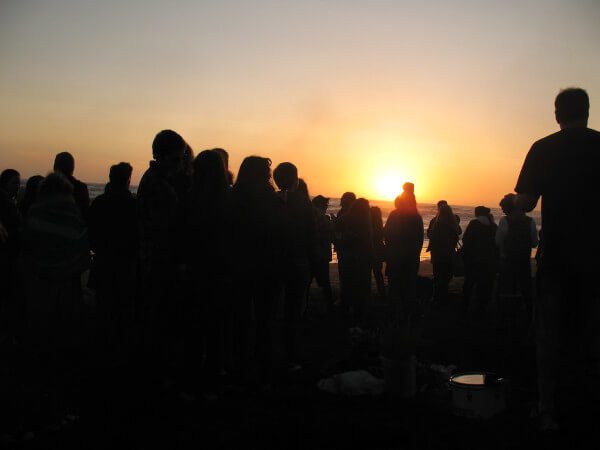
Litha Deities
There are plenty of deities who can be worshipped during Litha. These are generally mother goddesses and father gods and deities that preside over love, passion, fertility, and beauty. The main deities for Litha across various cultures include;
- Lugh – He is a Celtic god of skill and also talent distribution. Association with summer solstice comes from his role as a harvest god.
- Sunna/Sol is a Germanic goddess of the sun and the Moon-god’s sister. She is also the goddess of healing.
- Apollo – Is a Greek god of the sun and presided over music, healing, and medicine.
- Horus – Is an Egyptian sun god who rose and set every day like the sun.
- Hestia – She is a Greece goddess of domestic space and family.
- Juno – A Roman goddess associated with women’s fertility and marriage patroness.
- Sulis Minerva – A deity who emerged after merging Sulis (a Celtic sun goddess) with Minerva, the Roman goddess of wisdom.
- Ametarasu – Japanese solar goddess and the sister to the storm god and moon deity.
Other deities worshipped during this period are Freya, Zeus, Ra, Isis, Venus, Ishtar, Oak/Holly King, Dagda, and Venus.
Litha Crystals
- Amber: Amber is fossilized tree sap with grounding abilities. It also promotes positive thinking and patience and guides both decision-making and creativity.
- Tiger’s Eye: it has grounding properties that bring calm to the hyperactive. It protects against psychic attacks and ill-wishes and is also used in prosperity rituals to attract steady wealth.
- Jade: Jade crystal is associated with purity and serenity. It is available in different colors, each with its attributes. White jade directs energy to constructive use and aids decision-making. Yellow jade stimulates energy, while blue jade is for peace and reflection.
- Onyx: It is a protective and grounding stone. It helps you find purpose and boosts self-confidence.
- Cinnabar: It is a stone that attracts abundance and clears energy blockages. It also enhances fertility and boosts your persuasiveness and assertiveness.
- Topaz: This stone directs energy where needed, making it excellent for affirmations and visualization. You can use it for healing, recharging, good health, and joy.
- Gaspeite: This stone s useful to dissolve emotional pain, distress, heart, and hurt. It is also protective and excellent during meditation.
Litha Runes



There are three main runes associated with this period. They belong to the Elder Futhark runes and speak to the attributes associated with the Litha season. You can have them as decoration in your home and around the altar and use them for meditation and prayers. Call on their attributes and reflect on what they mean to you and how you can learn or integrate these attributes into your life.
- The Dagaz Rune is associated with awakening and transformative power and connecting to your higher mind.
- The Fehu Rune: It is associated with wealth and prosperity, and new beginnings.
- The Uruz Rune: It is associated with the life force, patience, endurance, and raw physical power.
Flip Cards: Runes – Meanings and Magickal Correspondences – Opens in new tab
Litha Spells & Magical Works
There is plenty of magical energy around the summer solstice, and you should harness this to work in your favor. Try the following activities;
- Hold prayers: You can have prayers summoning protection and providence from the elements. You can have garden prayers, beach prayers, or pray to the sun.
- Set a Litha Altar: Set up a Litha altar that will be the center of your worship. Ideally, it should be outside or near a window where the light falls on it. Decorate the altar with high-energy crystals, candles, incense, and Litha imagery.
- Perform a Midsummer night ritual: you can take after the ancient Celts and Brits and honor the sun outdoors under the sky with a bonfire, song, and ritual dances.
- Perform a ritual to celebrate fathers: the masculine is hardly honored in most celebrations, so this is a perfect time to honor your fathers and the males in your circle. Make offerings and prayers.
- Charge your crystals: soak your crystals outside and let them chare with the moonlight and sun on the year’s longest day. You will need this energy in your other sessions.
- Perform protection charms and spells: Litha is a perfect time to renew your charms and discard old spells and protection charms that have worn out or are no longer useful.
Litha Traditions & Celebration
There are numerous ways to observe Litha, whether you are alone or with your family. Here are some ideas to guide you.
Host a bonfire
This is the simplest and most fun-filled Litha celebration you can have. You celebrate peak sun energy, and you can incorporate several other elements, including dancing and divinations. You also get to involve the whole family and friends.
Go out and connect with nature.
It is the longest day of the year, giving you extra hours out before the sun goes down. Go out on a hike with friends or alone. It could be as simple as taking a walk in the park or going for an adventure. Be in the wild, soak in the sun’s energy as you appreciate and celebrate the abundance around you.
Ritual cleansing
Bring more light into your domestic space by cleaning, especially wiping down the windows and the glass panes on the door. You can involve the whole family and complete the cleaning with decorations of flowers and herbs and burn incense. It will also be a good time to discover which items to sell/give away and free up space for incoming abundance.
Related reading: The Ancient Wisdom of the Elements: The Blueprint of Existence – Opens in new tab
Seek prosperity
The summer solstice is full of abundance, and you should channel this energy into your life. It is a perfect time to start new ventures, whether a family, having a baby, starting a saving account, a business, a new hobby, etc.
Harvest herbs
The herbs are freshest at this point in the calendar, so it is a perfect time to pick them up. It could be general harvesting, pickling, or getting supplies for your rituals or to share with friends.
Celebrate family
Litha is a time of making close bonds and celebrating the family you have been given, so find activities that involve the whole family. It is why garden barbecues feature prominently in Litha celebrations.
Take time off to rejuvenate.
It is an excellent time to refresh yourself since plenty of energy is around. Take time off your schedule and relax, soaking in the sun while reading a book, meditating, or trying some yoga.
Donate or do something for charity
As you enjoy and welcome the abundance in your life, it is also good to show gratitude for what you already have. You can donate items or volunteer for some activity at the local charities.
Enjoy the water
It is easy to forget that water is also an important part of celebrating Litha as it is a shared domain for many of the fertility goddesses. It is also calming and a good way to wind down or celebrate in a group.
Honor the fairies
It is believed that there is plenty of fairy activity during the solstices, and you can honor them by building them houses in the woods or garden and leaving them some offerings. You can make the house at home or get pre-made ones from the store. Some treats to leave include cookies, sweetbread, milk, or alcoholic beverages.
Do you want to learn more about Wicca and Witchcraft? Check out our recommendations at “Wiccan Bookshelf”
Stay in Touch
 Join our newsletter by using the forms on this website or click here!
Join our newsletter by using the forms on this website or click here! Follow us on Google News
Follow us on Google News Follow us on Facebook
Follow us on Facebook
Featured Image by Ankit Sood on Unsplash




